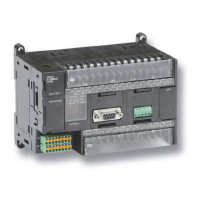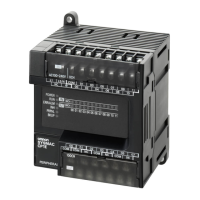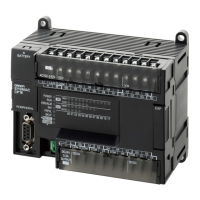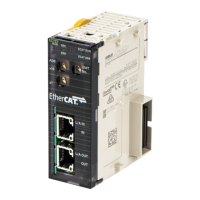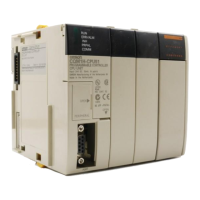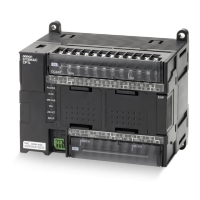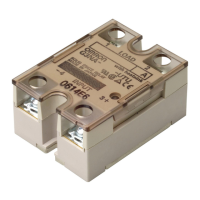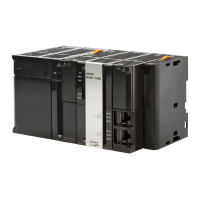286
Inverter Positioning Section 5-3
Low-speed Operation
Using Minimum Output
Setting
An inductive motor driven with an inverter is different from a servomotor in that
the torque at low speeds is so low that it may not be possible to turn the motor
shaft at the minimum frequency. The CP1L provide a minimum output setting
the ensure a minimum output to enable positioning at low speeds even when
there are extremely few pulses in the error counter.
Absolute Positioning The amount of movement (i.e., amount of rotation) is input to the high-speed
counter as feedback pulses. During inverter positioning, the present value of
the high-speed counter can be used as an absolute position.
Note The absolute position will change if the present value of the high-speed
counter is changed or the high-speed counter is reset.
5-3-4 Specifications
Inverter Positioning
Specifications
Pulse frequency
Time
In-position width
Pulse Output Flag
In-position flag
PLS2
instruction
Error counter
present value
Error counter
error setting
Error Counter Error
Flag (Output value cleared.)
Error Counter Reset Bit
(Error counter cleared.)
Motor shaft
turned manually.
Error counter
error occurs.
Item Specification
Applicable inverters Inverter that receives frequency commands from an analog
input or via Modbus-RTU communications. (Control method:
V/f control, vector control, etc.)
Applicable motors Depends on the inverter (e.g., squirrel-cage inductive motor)
Number of position-
ing ports and
response frequency
Two ports at 100 kHz (J models: 20kHz) (within the speed
command range of the pulse output instructions)
Inverter command
output method
Modbus-RTU communications commands or analog output
(from ladder program)
Present value coor-
dinate system
With origin: Absolute coordinate system
Without origin: Relative coordinate system
Present value range 32 bits: 8000 000 to 7FFF FFFF hex (range of position com-
mand values and present values for pulse output instructions)
Output modes Continuous output (Number of pulses not specified.)
Independent mode (Number of pulses specified.)
Acceleration/decel-
eration control
Trapezoidal or S-curve acceleration/deceleration
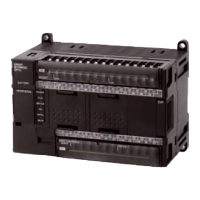
